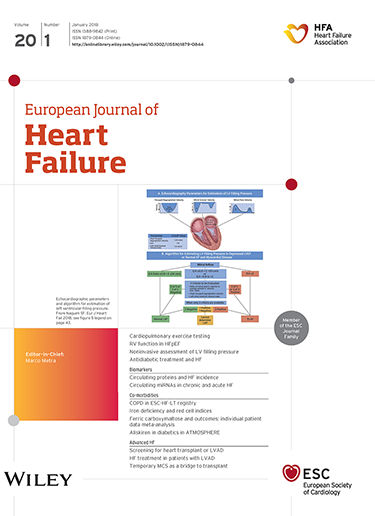Metabolic dysfunction-associated steatotic liver disease is associated with increased risks of heart failure
Abstract
Aims
Metabolic dysfunction-associated steatotic liver disease (MASLD), defined by steatotic liver disease (SLD) and cardiometabolic factors, is increasing in prevalence, but its association with heart failure (HF) is unclear.
Methods and results
Patients with SLD without a history of HF from 2006 to 2021 were retrospectively included and were classified into MASLD and non-MASLD groups that were followed longitudinally. The primary outcome was the new development of HF, which was sub-classified by echocardiography. Multivariable and propensity score matching analyses were conducted to adjust for confounding factors. Overall, 26 676 patients with SLD were included, with a median age of 51 years and 71% classified as MASLD. During a median follow-up of 6 years, 429 (1.61%) patients developed HF, and 76% were HF with preserved ejection fraction (HFpEF). The risk of HF was significantly higher in patients with MASLD than in those without (sub-distribution hazard ratio [SHR] 2.59, 95% confidence interval [CI] 1.84–3.64) after adjustment of competing mortality. There was a dose-dependent increase in HF risks in patients with more cardiometabolic risk factors (SHR 1.12, 95% CI 1.04–1.22). MASLD was also associated with higher risk of HF-related hospitalization (SHR 2.30, 95% CI 1.31–4.04) and specifically, the risk of HFpEF (SHR 1.91, 95% CI 1.27–2.86). In propensity score-matched cohorts, MASLD was also associated with a 2.52-fold higher risk of HF.
Conclusion
In patients with SLD, those with MASLD show a higher risk of HF, specifically HFpEF. Future studies are warranted to validate the association between HF and MASLD.



 求助内容:
求助内容: 应助结果提醒方式:
应助结果提醒方式:


